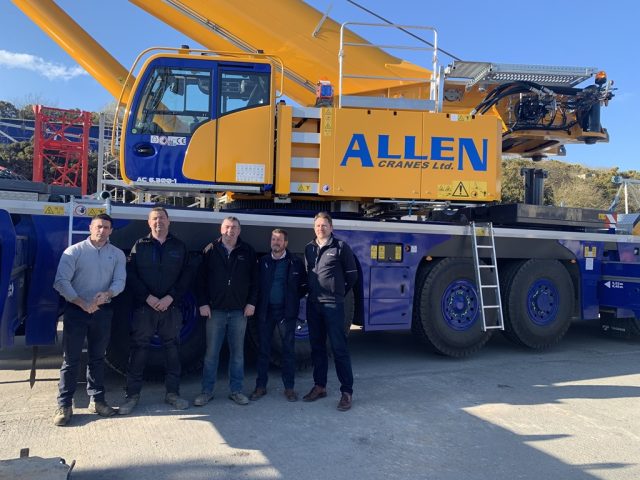The Tadano Group has released the GR-1300XL-4, rough terrain crane for the North American market. It expands Tadano’s rough terrain offering into the 130-US ton (118 metric ton) weight class, equipping even more customers with a versatile machine featuring a long boom concept and compact design.
The GR-1300XL-4 is redefining the rough terrain crane market, the company said. Its six-section boom can extend up to 183.7 feet (56 meters) using a telescoping pinning system, making it the longest boom of any rough terrain crane in the 130-ton weight class. Tadano’s “Smart Chart” is also on-board, allowing the crane’s work performance to be maximized. With a compact carrier length of just 28 feet (8.5 meters) on a two-axle system and a self-removable counterweight, the GR-1300XL-4 can be transported to job sites easily and efficiently.
Powering the GR-1300XL-4 is a Cummins B6.7 diesel producing 280 hp (209 kW) and 850 ft-lb (1,152 Nm) of torque. Its transmission has five forward speeds that are complimented by four steering modes. The GR-1300XL-4 also comes with 20-degree tiltable cab for improved safety, visibility and comfort, and is controlled by Tadano’s AML-E2 system on a 10.4-inch (265 mm) multifunction display that is pressure-sensitive to handle gloved operation.
The GR-1300XL-4 is also equipped with the Tadano View System, a three-camera network that offers right front, rear view and blind spot views to assist with safe crane operation and driving. The GR-1300XL-4 also includes Tadano’s Clearance Sonar system that integrates four proximity sensors into the rear fender of the crane to audibly and visually alert the operator of any obstacles behind, while also serving as a blind spot warning system.
The newly-developed pump disconnect function automatically stops operation of the crane’s hydraulic pump if the crane is not operated for a certain period of time. This function contributes to a reduction in fuel consumption.
The crane is also equipped with functions such as the Fuel Monitoring System, Eco-Mode, and Positive Control that support environmentally-friendly operations by reducing carbon dioxide emissions, improving fuel consumption, and reducing noise.


















